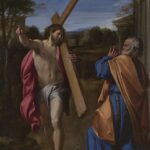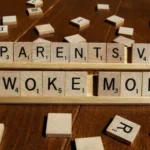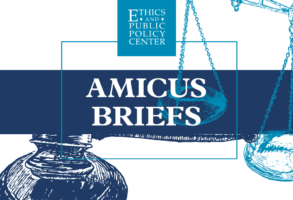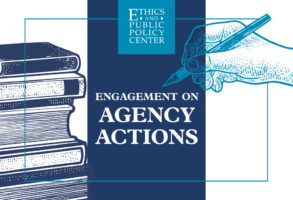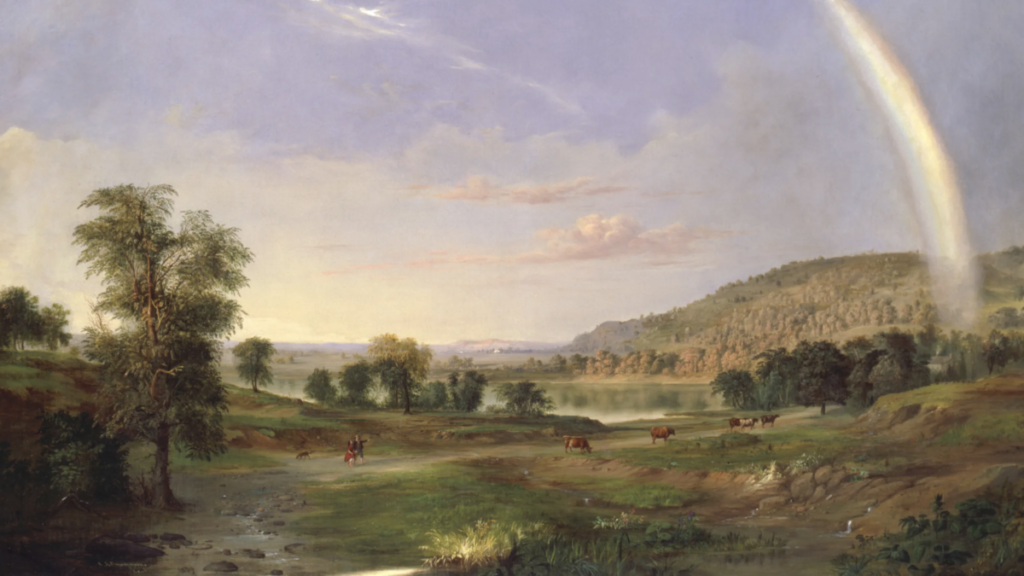
Published February 29, 2024
hy would a free black man go to the South during the time of slavery? And not just to visit, but to paint numerous landscapes, risking life and limb?
This was a question art dealers Michael and Julie Meyer asked themselves when they started collecting the paintings of 19th-century landscape artist, Robert S. Duncanson (1821-1872). Duncanson was a black man and a highly regarded artist in the Hudson River School (HRS). The HRS was made famous by the father of American landscape art, Thomas Cole. Artists associated with the HRS featured the virgin forests and landscapes of the wild and untouched American terrain.
Duncanson became a leading painter of the day in the West during the 1840s and ’50s with his work featured nationally before the Civil War. His fame has surged recently for his work “Landscape with Rainbow” featured in the U.S. Capitol for President Biden’s 2021 inauguration.
The answer to the Meyers’ initial question of a black man voluntarily painting landscapes in the South has led them to discover perhaps one of the most fascinating artistic journeys in American art history. The beautiful landscapes Duncanson painted were not just created for his own pleasure or as mementos of the South but can be read in a much more intriguing light.
They were encrypted visual maps within compositions of detailed ridgelines, water sources, and gorges leading north as a pathway for those seeking freedom. In his paintings, Duncanson embedded the code words and necessary maneuvers used in the Underground Railroad that abolitionists of the day would understand. The Meyers’ working theory is that members of the Underground Railroad used these images and smaller sketches to familiarize runaways with the terrain of the next stop in their journey north.
Since first discovering his work, the Meyers have now identified 46 of Duncanson’s landscapes, all of which are featured at their gallery, Meyer Fine Art, an hour outside of Washington, D.C., in Fredericksburg, Virginia. The exhibit has been curated by Michael, an art historian and recognized expert on Duncanson.
The spark that got the couple thinking about Duncanson’s motives was an 1850s article from the Ashville Messenger, based in North Carolina, that accompanied one of his paintings sent to auction in 2003. The article featured the many places Duncanson had painted up to that point and laid out the map of how Duncanson came to Asheville. As he traveled, he sketched the Cumberland Gap, towards Knoxville to pick up the French Broad River, sketched at Hot Springs then south to Asheville, Black Mountains, and Hickory Nut Falls.
“All the locations mentioned in the article have a finished oil painting by Duncanson which has been found in the last 20 years,” Meyer explains. “And my research has shown that all of these places have Underground Railroad ties. Duncanson was documenting landmarks as a pathway to freedom.”
After years of research, the Meyers can unpack the hidden elements from Duncanson’s paintings. The untrained eye sees a generally placid countryside, but there is much more at work. “In Duncanson’s painting titled ‘The Gospel Train,’” says Michael, “the imagery of the slave song ‘Swing Low, Sweet Chariot’ is brought to life.” He continues:
The painting depicts two cows looking out over the river at the engine car of a train, swinging low around the riverbank, with only one passenger car, and no “second class;” everyone was equal on that train. “A band of angels comin’ after me, comin’ for to carry me home.” In the painting the cows are the runaways, and the train the conductors just as in the song the angels are the conductors of the Underground Railroad.
Comparable meaning is evident in “Crossing the Swannanoa River at the Seven Sisters North Carolina” (c. 1851). Julie writes:
Duncanson is not inviting the viewer to enter into the painting or to go on the journey, but to witness, from afar, what has to be done. Duncanson has placed a thick barrier of vegetation across the lower part of the composition to keep the viewer away from the three cows on the ledge. It is important to note the abolitionist codewords for an escaped slave are “cow” or “cattle.” To be successful, a runaway slave had to zig-zag through water to lose their scent from the pursuing hounds.
As stated, the image does draw the eye across a river, back and forth, and then finally up into the peaks of the Black Mountains. This composition as a whole can be read as a visual map of a technique runaways must learn to successfully escape. When taken together, the exhibition’s works piece together routes taken north via the Underground Railroad; each work includes detailed ridgelines and water sources that are recognizable still today.
This interpretation of Duncanson has been largely dismissed or overlooked by art historians until recently. The Meyers attribute Duncanson’s unknown motives to the fact that very few people spoke about the Underground Railroad in the generations following the Civil War because those involved could have been implicated in dangerous ways. It is only recently that Duncanson’s story is being told.
The display of “Landscape with Rainbow,” chosen by First Lady Jill Biden for the 2021 Inauguration, unleashed a torrent of articles featuring the interpretation of the painting by curators and art critics. It was their general belief, at the time, that the painting was a foreboding image about the Civil War with a hopeful sentiment. Art critic Christopher Knight with the Los Angeles Times wrote in 2021, “Duncanson’s rainbow precedes the brutal devastation of the Civil War that erupted the next year. “Landscape With Rainbow” is a cautionary image, painted as the seams of the American union were being pulled apart. But it carries with it an unmistakable ray of hope: Rainbows typically appear after a storm has passed, not before.”
In The Washington Post, article of Jan. 28, 2021, the Smithsonian American Art Museum curator, Eleanor Harvey, who helped Jill Biden select “Landscape With Rainbow,” offered a different interpretation of Duncanson’s work. “He’s looking for peace,” she says. Harvey praises the “therapeutic quality” conveyed in his paintings.
In the spring of 2021, Michael Meyer first shared his research with Eleanor Harvey. Now after the exhibition and the publication of its companion catalog, “Robert S. Duncanson and His Courageous Southern Travels,” word is getting out. In the January-February 2024 edition of American Fine Art Magazine, the Smithsonian curators are quoted commenting about “Landscape with Rainbow,” echoing Michael Meyer’s interpretation of Duncanson’s narrative theme, making better sense of the painting while setting the record straight about Duncanson’s larger project.
“The rainbow overhead falls directly onto the roof, possibly a reference to safe houses to which enslaved people fled while seeking freedom. The stream reminds us of the division between free states and slave states, but waterways also helped escapees on their path to freedom, as water erased footprints and masked human scent,” the author writes.
Duncanson’s Underground Railroad efforts may not have ever come to light if the Meyers hadn’t done the careful work of curating and “reading” what Duncanson was doing broadly in his work. Duncanson knew well the fragility of freedom. It was a theme that punctuated much of his work and motivated his life. When speaking of race, Duncanson, who had seen the best and worst of humanity, wrote in a letter to his son, “I have no color on the brain, all I have on the brain is paint. … I care not for color. Love is my principle, order is the basis, progress is the end.”
As the Meyers explain, “This was a father teaching his son not to judge by the color of one’s skin but by the character of a man.”
No matter how important Duncanson’s work was for the Underground Railroad, the Meyers are quick to add that he was also a remarkable and renowned artist of his time, touring widely throughout North America and Europe. “As important his intentions were for the Underground Railroad,” says Michael, “it cannot be lost that Duncanson was first and foremost an artist, above any skin color, his passion was to render beauty itself, and in this endeavor alone, aside from all else, he achieved with excellence.”
Perhaps someday, the work of Duncanson and his roadmap to freedom will become a well-known part of American history, but until then, do yourself a favor and go see his work in Fredericksburg.
Carrie Gress, Ph.D., is a Fellow at the Ethics and Public Policy Center, where she co-directs EPPC’s Theology of Home Project. She earned her doctorate in philosophy from the Catholic University of America and is the co-editor at the online women’s magazine Theology of Home.






